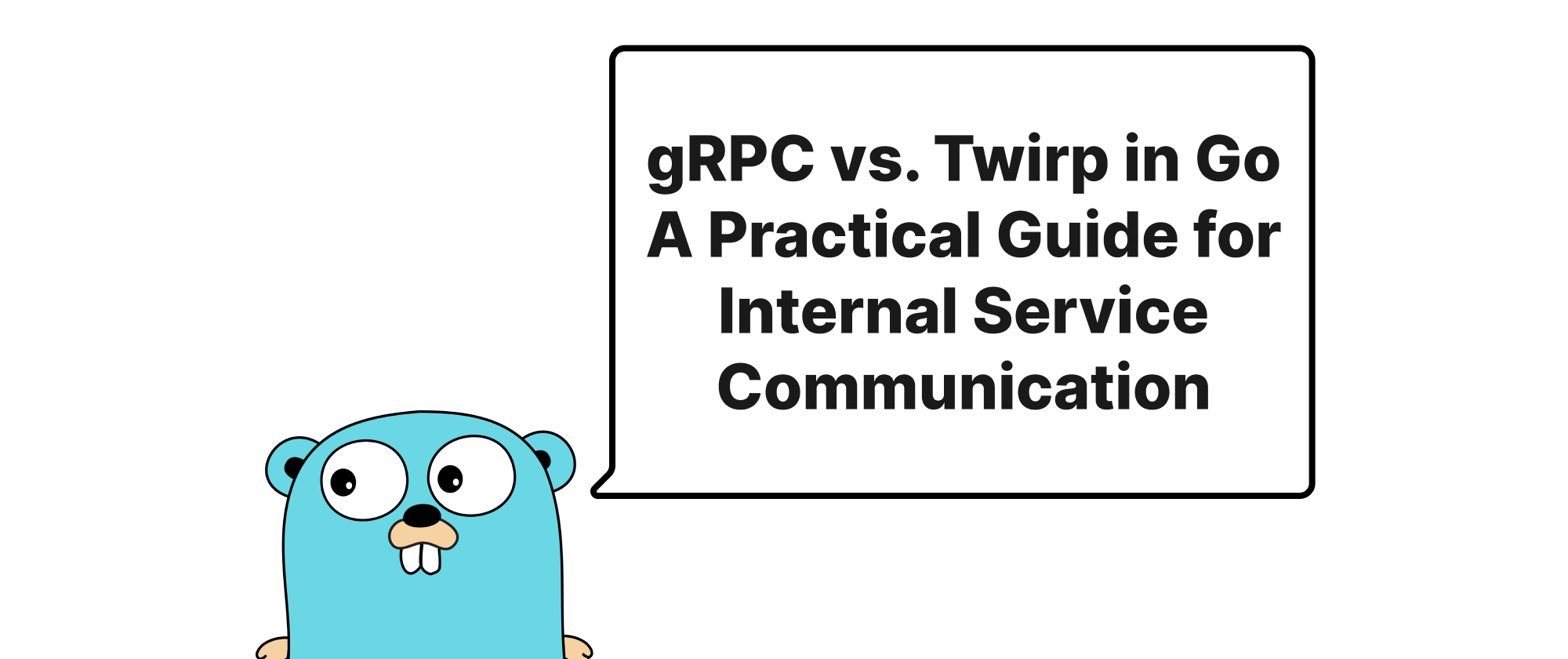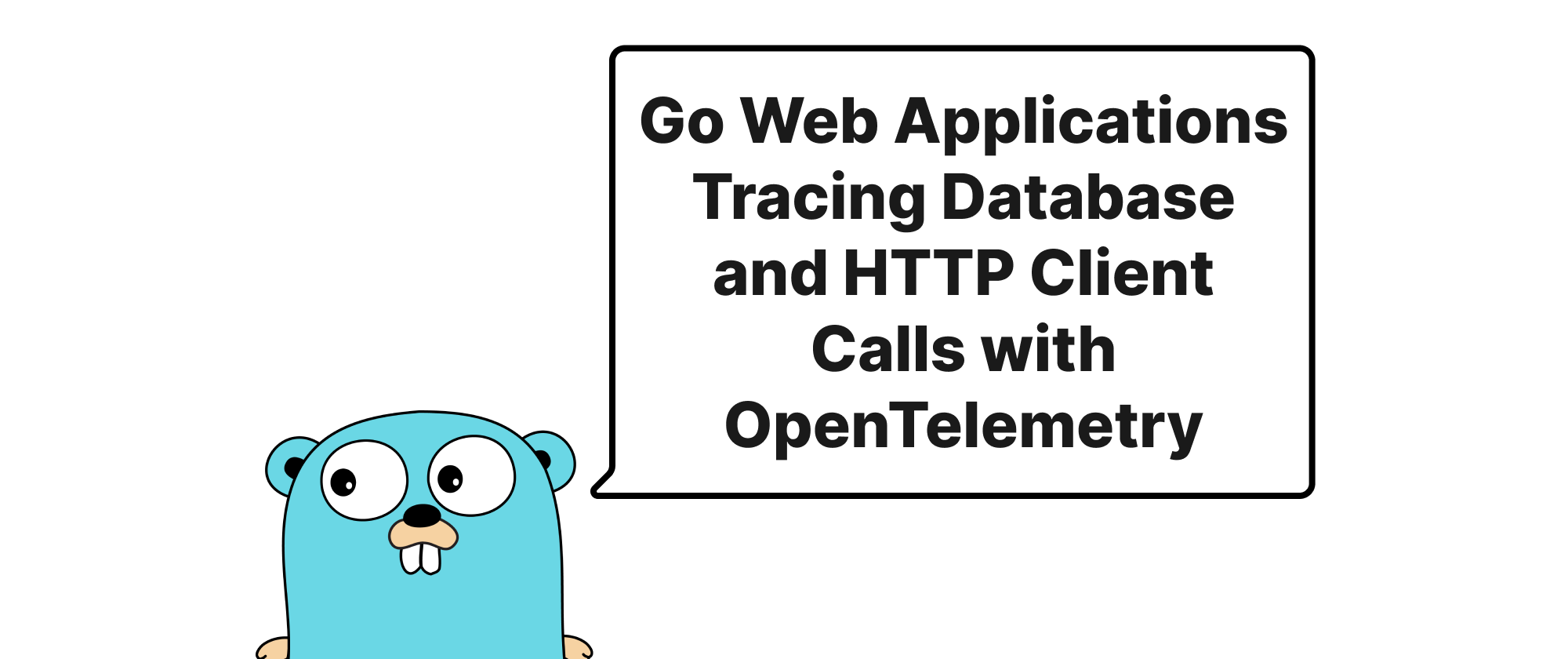gRPC vs. Twirp in Go A Practical Guide for Internal Service Communication
James Reed
Infrastructure Engineer · Leapcell

Introduction
In the rapidly evolving landscape of microservices and distributed systems, efficient and robust inter-service communication is paramount. As applications decompose into smaller, independently deployable units, the need for a well-defined and performant communication protocol becomes critical. Go, with its strong concurrency primitives and excellent performance characteristics, has become a popular choice for building such services. When it comes to internal service communication in Go, two prominent frameworks often come into consideration: gRPC and Twirp. Both offer advantages over traditional REST APIs, such as binary serialization and strong typing, but they cater to slightly different needs and philosophies. This article delves into a comparative analysis of gRPC and Twirp, exploring their core concepts, practical implementations, and suitable use cases to guide developers in making an informed technology selection for their internal Go services.
Core Concepts and Implementation
Before diving into the comparison, let's establish a foundational understanding of the key concepts that underpin both gRPC and Twirp.
Protocol Buffers (Protobuf): Both gRPC and Twirp leverage Protocol Buffers as their Interface Definition Language (IDL) and primary serialization format. Protobuf is a language-agnostic, platform-agnostic, extensible mechanism for serializing structured data. You define your service contracts and message formats in .proto files, which are then compiled into code for various programming languages.
RPC (Remote Procedure Call): At its core, RPC is about making a local function call to execute code on a remote machine. Both gRPC and Twirp are RPC frameworks, abstracting away the network communication details and allowing developers to interact with remote services as if they were local functions.
gRPC: The Full-Featured Powerhouse
gRPC is a high-performance, open-source universal RPC framework developed by Google. It's built on HTTP/2 for transport, Protocol Buffers as the IDL, and provides features like authentication, load balancing, health checking, and more.
Mechanism: gRPC uses a client-server model where the client invokes a method on the server. The definition of the service methods and message types is specified in the .proto file. A gRPC compiler (protoc) with the Go plugin generates server and client boilerplate code.
Key Features:
- Bidirectional Streaming: gRPC supports four types of service methods: unary, server streaming, client streaming, and bidirectional streaming. This is a significant advantage for real-time applications or scenarios requiring continuous data exchange.
- HTTP/2: Leveraging HTTP/2 enables features like multiplexing (multiple concurrent requests over a single TCP connection) and header compression, leading to better performance and reduced latency.
- Rich Ecosystem and Tooling: Being a Google project, gRPC has a mature ecosystem with extensive language support, monitoring tools, and integration with various cloud services.
- Interceptors: gRPC allows for interceptors on both the client and server side, enabling middleware-like functionality for logging, authentication, tracing, etc.
Example (gRPC Service Definition greeter.proto):
syntax = "proto3"; package greeter; option go_package = "greeterService"; service Greeter { rpc SayHello (HelloRequest) returns (HelloReply) {} } message HelloRequest { string name = 1; } message HelloReply { string message = 1; }
Example (gRPC Server main.go):
package main import ( "context" "log" "net" pb "greeterService" // Generated by protoc "google.golang.org/grpc" ) type server struct { pb.UnimplementedGreeterServer } func (s *server) SayHello(ctx context.Context, in *pb.HelloRequest) (*pb.HelloReply, error) { log.Printf("Received: %v", in.GetName()) return &pb.HelloReply{Message: "Hello " + in.GetName()}, nil } func main() { lis, err := net.Listen("tcp", ":50051") if err != nil { log.Fatalf("failed to listen: %v", err) } s := grpc.NewServer() pb.RegisterGreeterServer(s, &server{}) log.Printf("server listening at %v", lis.Addr()) if err := s.Serve(lis); err != nil { log.Fatalf("failed to serve: %v", err) } }
Example (gRPC Client client.go):
package main import ( "context" "log" "time" pb "greeterService" // Generated by protoc "google.golang.org/grpc" "google.golang.org/grpc/credentials/insecure" ) func main() { conn, err := grpc.Dial("localhost:50051", grpc.WithTransportCredentials(insecure.NewCredentials())) if err != nil { log.Fatalf("did not connect: %v", err) } defer conn.Close() c := pb.NewGreeterClient(conn) ctx, cancel := context.WithTimeout(context.Background(), time.Second) defer cancel() r, err := c.SayHello(ctx, &pb.HelloRequest{Name: "World"}) if err != nil { log.Fatalf("could not greet: %v", err) } log.Printf("Greeting: %s", r.GetMessage()) }
Twirp: The HTTP-First RPC Framework
Twirp is a RPC framework built by Twitch, also using Protocol Buffers as its IDL. It aims for simplicity and familiarity by focusing on generating HTTP/1.1 compatible services that adhere to a well-defined JSON or Protobuf encoding over plain HTTP.
Mechanism: Unlike gRPC which uses HTTP/2 directly, Twirp generates standard HTTP handlers (specifically http.Handler for Go). This means Twirp services can be easily integrated into existing HTTP infrastructure, work well with standard HTTP proxies, and are easier to debug with common HTTP tools.
Key Features:
- Simple HTTP Semantics: Twirp requests are simple POST requests to
/twirp/package.Service/Methodendpoints. The body contains the Protobuf-encoded binary or JSON payload. This makes it very easy to understand and integrate. - HTTP/1.1 Compatibility: This is a major differentiator. Twirp doesn't rely on specialized HTTP/2 features, making it simpler to deploy behind standard load balancers, proxies, and to interact with in environments where HTTP/2 might not be fully supported or desired everywhere.
- Minimalistic and Opinionated: Twirp is designed to be lean and predictable. It focuses on the core RPC problem without adding a large set of ancillary features, encouraging developers to use existing Go libraries for tasks like authentication or logging.
- Easy Debugging: Because it's plain HTTP, you can use
curlor any HTTP client to interact with and debug Twirp services directly.
Example (Twirp Service Definition greeter.proto):
syntax = "proto3"; package greeter; option go_package = "greeterService"; service Greeter { rpc SayHello (HelloRequest) returns (HelloReply); } message HelloRequest { string name = 1; } message HelloReply { string message = 1; }
(Note: The .proto file is identical to gRPC for basic unary RPC, highlighting Protobuf's IDL portability.)
Example (Twirp Server main.go):
package main import ( "context" "log" "net/http" pb "greeterService" // Generated by protoc-gen-twirp_go ) type server struct{} func (s *server) SayHello(ctx context.Context, req *pb.HelloRequest) (*pb.HelloReply, error) { log.Printf("Received: %v", req.GetName()) return &pb.HelloReply{Message: "Hello " + req.GetName()}, nil } func main() { twirpHandler := pb.NewGreeterServer(&server{}) // Create a new ServeMux for routing mux := http.NewServeMux() mux.Handle(twirpHandler.PathPrefix(), twirpHandler) log.Printf("server listening on :8080") http.ListenAndServe(":8080", mux) }
Note: You would generate greeter.twirp.go using protoc --twirp_out=. --go_out=. greeter.proto.
Example (Twirp Client client.go):
package main import ( "context" "log" "net/http" pb "greeterService" // Generated by protoc-gen-twirp_go ) func main() { client := pb.NewGreeterClient("http://localhost:8080", http.DefaultClient) ctx := context.Background() resp, err := client.SayHello(ctx, &pb.HelloRequest{Name: "World"}) if err != nil { log.Fatalf("could not greet: %v", err) } log.Printf("Greeting: %s", resp.GetMessage()) }
Application Scenarios and Technical Selection
The choice between gRPC and Twirp largely depends on your specific requirements and existing infrastructure.
Choose gRPC when:
- You need advanced RPC patterns: If your services require server streaming, client streaming, or bidirectional streaming (e.g., real-time dashboards, chat applications, continuous data feeds), gRPC is the clear winner. Twirp only supports unary RPC.
- Performance is the absolute highest priority: While Twirp is performant, gRPC's reliance on HTTP/2 for multiplexing and header compression can offer marginal performance benefits in highly concurrent scenarios, especially over high-latency networks.
- You operate in a polyglot environment with rich tooling needs: gRPC has official support for a wide array of languages and a mature ecosystem for monitoring, tracing (e.g., OpenTelemetry integration), and load balancing, making it ideal for large, diverse microservice architectures.
- You require built-in features like authentication and keep-alives: gRPC provides these out-of-the-box, simplifying complex setups.
Choose Twirp when:
- Simplicity and familiarity with HTTP/1.1 are paramount: If your team is comfortable with standard HTTP and you want to avoid the complexities of HTTP/2-specific infrastructure, Twirp's "plain HTTP" approach is very appealing.
- You leverage existing HTTP middleware and proxies extensively: Twirp services are
http.Handlercompatible, meaning they can easily integrate with standard Gonet/httpmiddleware, reverse proxies (like Nginx, Caddy), and API gateways without special configuration. - Debugging with standard HTTP tools is important: Being able to
curlyour RPC service and see a standard HTTP request/response can greatly simplify debugging, especially for developers less familiar with gRPC's binary nature. - Your communication patterns are primarily unary RPC: For typical request-response interactions, Twirp performs exceptionally well and offers a simpler codebase compared to gRPC.
- You prioritize a smaller dependency footprint: Twirp generally has fewer external dependencies than gRPC, contributing to faster build times and potentially smaller binary sizes.
- Integrating with browser-based clients for simple RPC: Though gRPC-Web exists, Twirp's HTTP/1.1 nature can sometimes be simpler to expose directly to browser clients for straightforward RPCs, although CORS and security considerations still apply.
Conclusion
Both gRPC and Twirp are excellent choices for building robust and efficient internal service communication in Go, offering significant advantages over traditional REST APIs by leveraging Protocol Buffers. gRPC stands out with its comprehensive feature set, including diverse streaming capabilities and HTTP/2 optimizations, making it suitable for complex, high-performance, and polyglot environments. Twirp, on the other hand, excels in its simplicity, HTTP/1.1 compatibility, and ease of integration with existing HTTP infrastructure, proving ideal for teams prioritizing straightforwardness and familiarity for unary RPC communication. The optimal choice ultimately hinges on your project's specific needs, team expertise, and existing architectural landscape.


